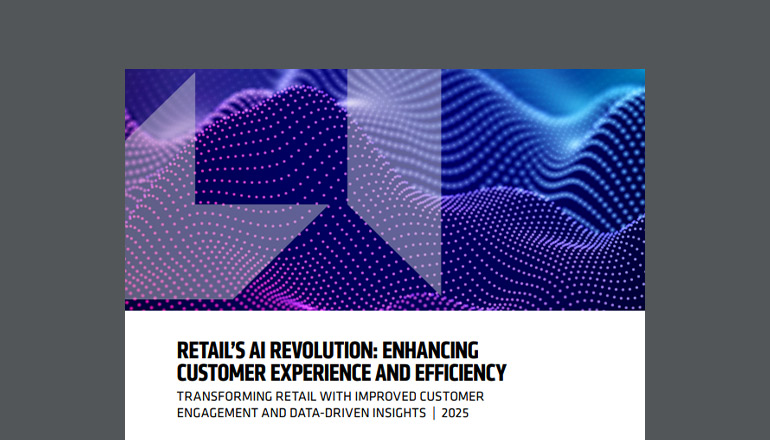Tech Journal Exploring New Horizons With Intelligent Edge: Strategies for Success
Intelligent edge is not just about real-time data collection. It’s about reaching a new vantage point — one built on smart moves and full-scale operationalization. Here’s how you do it.
By Amol Ajgaonkar / 15 Mar 2022 / Topics: Artificial Intelligence (AI) Featured Digital transformation Intelligent edge

I’ve spent nearly 20 years in the technology space. Two decades in any industry means adapting to change — a lot. But when it comes to technology, the way in which you adapt means everything now. Businesses can’t afford to dive in blindly to the “next big thing.” They can’t embark on a mission without a plan. Not without consequences.
Whether it’s computer vision, predictive maintenance or anomaly detection, it doesn’t matter what form of Artificial Intelligence (AI) the business is buzzing about — without strategy and operationalization, it can’t be that intelligent of an investment. Intelligent edge is no exception. Businesses are eager to embrace it, but that can’t be done thoughtfully without expanding your view and examining all your options.
So let’s explore intelligent edge: how it works across the IT ecosystem, and the types of conversations I’m having with clients to ensure maximum ROI and lasting success.

“ My journey into the technology world started in eighth grade, learning assembly language for 8085 and then 8086. To this day, learning any technology is a relaxing activity for me and a vehicle to get away from life’s stress.
Level set: What is the intelligent edge?
Traditionally, data gets generated, moves to a data center or the cloud, and gets processed and finally accessed. There is lag and latency in this method. Intelligent edge brings that processing (or some part of it) right down to where that data is generated. This leads to quick data analysis and more intentional business decisions.
But to realize lasting success with intelligent edge, we need to start thinking about it across categories: Your hardware, infrastructure, software and security at the edge — and all the careful planning and orchestration required to reap its many benefits.
Six ways you’ll run smarter with intelligent edge
Faster decision-making
Better visibility and transparency
More efficient workflows (through automation)
Reduced operating costs
Enhanced productivity
Increased reliability
New paths for edge devices: distributed intelligence
When you think of how to collect and store data traditionally, you might envision a data center with big compute racks. Think bulky form factors. But your form factors don’t always need to have a large footprint to embrace intelligent edge. It all depends on your business use case. You may be able to distribute your form factors, leveraging smaller hardware with an aggregation point at the edge itself, and that can have a bigger compute component.
Remember: An edge device is any piece of hardware that controls and processes the data and flow between where the data is generated and the enterprise network.
It’s an empowering definition, because you can still run your software on a very small device like an Intel NUC, Lenovo, HPE or Dell Gateway, all of which could run on a CPU — then take your stack and move it to a bigger compute. That compute could have dedicated GPUs, IGPUs or multi-processors.
Businesses can even use their existing hardware and bring that intelligence closer to it. In manufacturing and retail, we’re seeing the use of existing (not specialty) cameras doing analysis of how space is being used. You have options. It’s just a matter of knowing what those options are (which many businesses today do not) and determining which works best for your use case and objectives.
Navigating edge applications
Of course, we can’t look at edge devices in a vacuum. The applications that power them are equally important. Today, there are software stacks that are built with specialization. For instance, software stacks can be given an AI model, and that stack will know exactly how to run on a GPU, an IGPU or an FGPA. The AI model can even be accelerated with a deep learning toolkit like Intel OpenVINO or NVIDIA SDKs.
This flexibility is a gamechanger. Form factors will keep changing at the edge, but you won’t need to keep developing separate, “snowflake” solutions for every new hardware that comes to the forefront.
The future of work is agile — that means not having to rearchitect an entire application because of one new requirement.
The applications don’t need to be complex.
Many businesses think they need machine learning or deep neural networks to thrive with intelligent edge. Not necessarily. Even an application running simple threshold-based anomaly detection is a form of intelligent edge. An application could have just 100 lines of code and run auto-threshold, alerting you if a value reaches above or below a predefined level. In this case, that application would still give you business intelligence that’s actionable — and therefore valuable.
One of the most important considerations for edge applications is this: They should be extensible, not monolithic. How you build your applications for today and tomorrow is critical. Ask yourself: What use cases down the line will we be able to leverage this application and hardware for? Are we pigeonholing ourselves by only solving for today? The future of work is agile — that means not having to rearchitect an entire application because of one new requirement.
Making headway on: computer vision
Computer vision is a base component that enables edge applications. But computer vision by itself doesn’t hold a great deal of value.
Layer applications on your computer vision models that consider the operationalization of those models.
That means being able to run multiple models simultaneously, providing different ways to alert and take actions based on the results of each model.
More ways to thrive — and threats to stop
Edge locations create more interconnectedness between hardware, software and applications. They also create more entry points for cybercriminals. Thinking more holistically about security has never been more important. A code can be developed securely, but how that code functions across the organization must be seriously considered. This includes where the code executes and the data that it’s using. Think of security vulnerabilities such as Log4j that can strike without warning. Without any mechanisms to update code across the edge ecosystem, business operations can be caught off guard and severely hindered.
Path to safety: Traits of strong edge security
- Alignment to a cybersecurity framework, such as National Institute of Standards and Technology (NIST) (across edge hardware, infrastructure and software)
- Well-documented policies and processes
- Exception-based security (not one-size-fits-all)
- Centralized visibility and unified controls
- Consistent end user training
- Security as business continuity (regular testing, assessment and tweaking as needed)
Don’t let security complexities deter you from reaping the benefits of intelligent edge. Security is complex with or without an intelligent edge. Most of the businesses we work with just need guidance to get organized and strategic with how they secure the many moving parts of their business. Security is a layered approach, and the complexity of securing your edge solution from the ground up (device to cloud) will depend largely on:
- The business use case
- The layers of security that will be required (based on the risk profile of your business outcome)
- The architecture of the solution
Success at the edge starts with a powerful mindset shift that strategy and planning is everything.

Managing at scale makes the mission worthwhile
Operating at the edge across three locations is one thing, but what about 400 locations? What about 3,000? As businesses continue down the intelligent edge path, they will accrue multiple generations of gear in the field (spanning different form factor types with diverse use cases). A well-rounded plan for ongoing monitoring, administration and optimization across that ecosystem ensures the intelligent edge continues to provide value back to the business. As you scale to multiple deployments across locations, a managed endpoint monitoring strategy will be key. This will ensure the workloads that are delivering business outcomes are secure and stable.
Your new way of working after your investment must be sustainable. Managing all your edge hardware, software and security at scale will give you a consistent outcome.
Use cases: A look at what’s possible
Energy: Power grid maintenance, pipeline optimization, smart turbines
Transportation: Roadways and intersections, mass transit, airports
Retail: Inventory checks, Augmented Reality (AR) fitting rooms, shopping trends
Manufacturing: Factory networks, plant efficiency, asset monitoring
Healthcare: Medical asset tracking, temperature tracking, patient monitoring, wayfinding
Connected cities: Smart lighting, waste management, security, public connectivity
How to get started
Success at the edge starts with a powerful mindset shift that strategy and planning is everything. The biggest piece of advice we give businesses thinking of adopting an intelligent edge solution is this: Understand the value of solving a problem, then look for the appropriate technical solution. This helps create an investment strategy for the solution and a clear value proposition. It also helps determine the risk profile for that solution. So, what should you do first once you’re ready to invest time and resources into an intelligent edge initiative?
Focus on a simple use case that could solve a business problem you’re facing. Any task that’s done in a repeatable way is fair game for a Minimum Viable Product (MVP).
Envisioning workshops have been invaluable for our clients in terms of pinpointing use cases, requirements and success criteria for productive pilot projects. Once you have proof of value, make sure your MVP moves forward into production. As a technologist, it has been deeply gratifying to help organizations build and sustain this kind of momentum.
My challenge to you is this: Keep exploring what it means to transform with purpose.
The horizon is full of opportunities. Enjoy the view.
Technology will always give us smarter ways to do business. But I say it’s time to reimagine what it means to run smarter altogether. My challenge to you is this: Keep exploring what it means to transform with purpose. Commit to a technology strategy that covers more ground than what you may be comfortable with. Take a phased approach. Then, watch your business rise to a new vantage point. As your view expands, you’ll gain the confidence to be ambitious and act on all the exciting possibilities you never knew existed.
Start your journey. No matter what your goals are, you can build a winning intelligent edge strategy spanning hardware, software, security and beyond. See how we can help.
About the author:
Get to know Amol better in our new section featuring our Distinguished Engineers — and their strategic views on the industry's biggest trends.
Related articles
Narrow your topic:
Artificial Intelligence (AI) Digital transformation Tech Journal View all focus areas





















